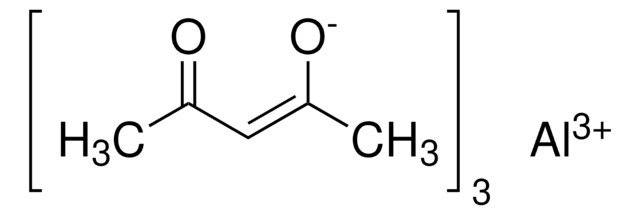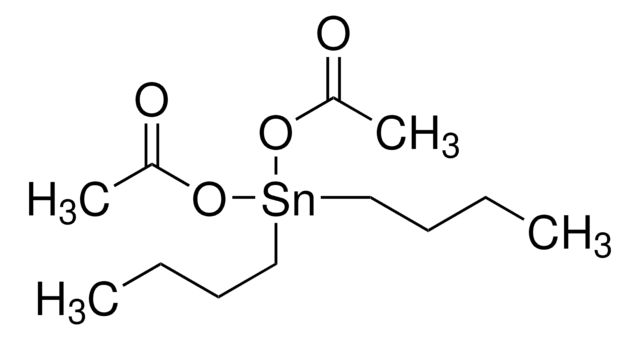447005
N,N′-Di-tert-butylethylenediamine
98%
Synonym(s):
1,2-Bis(tert-butylamino)ethane
Sign Into View Organizational & Contract Pricing
All Photos(1)
About This Item
Linear Formula:
(CH3)3CNHCH2CH2NHC(CH3)3
CAS Number:
Molecular Weight:
172.31
Beilstein:
1738432
EC Number:
MDL number:
UNSPSC Code:
12352100
PubChem Substance ID:
NACRES:
NA.22
Recommended Products
Quality Level
Assay
98%
form
liquid
refractive index
n20/D 1.43 (lit.)
bp
196-198 °C (lit.)
density
0.799 g/mL at 25 °C (lit.)
functional group
amine
SMILES string
CC(C)(C)NCCNC(C)(C)C
InChI
1S/C10H24N2/c1-9(2,3)11-7-8-12-10(4,5)6/h11-12H,7-8H2,1-6H3
InChI key
KGHYGBGIWLNFAV-UHFFFAOYSA-N
Looking for similar products? Visit Product Comparison Guide
Signal Word
Danger
Hazard Statements
Precautionary Statements
Hazard Classifications
Eye Dam. 1 - Skin Corr. 1B
Storage Class Code
8A - Combustible corrosive hazardous materials
WGK
WGK 3
Flash Point(F)
143.6 °F - closed cup
Flash Point(C)
62 °C - closed cup
Personal Protective Equipment
dust mask type N95 (US), Eyeshields, Gloves
Choose from one of the most recent versions:
Already Own This Product?
Find documentation for the products that you have recently purchased in the Document Library.
Customers Also Viewed
Silylene and Germylene Intermediates in the Reactions of Silole and Germole Dianions with N,N'-Di-tert-butylethylenediimine.
Toulokhonova IS, et al.
European Journal of Inorganic Chemistry, 14, 2344-2349 (2008)
Aluminium amides derived from metallation of N,N'-di-tert-butylethylenediamine.
Gardiner MG, et al.
J. Chem. Soc., Dalton Trans., 22, 4163-4169 (1996)
New chemistry from the reaction of N, N'-disubstituted ethylenediamines with glyoxal: synthesis of 2-imidazolidinecarboxaldehydes and 1, 4, 6, 9-tetraalkyl-1, 4, 6, 9-tetraaza-5, 10-dioxaperhydroanthracenes.
Willer RL, et al.
The Journal of Organic Chemistry, 50(13), 2368-2372 (1985)
Michael G. Gardiner et al.
Inorganic chemistry, 35(13), 4047-4059 (1996-06-19)
The lithiation of N,N'-di-tert-butylethylenediamine by MeLi in benzene has been shown by (1)H NMR spectroscopy to proceed via the partially lithiated species [cis-{Li[&mgr;-N(t-Bu)CH(2)CH(2)N(H)t-Bu]}(2)], 2, and [{Li[N(t-Bu)CH(2)CH(2)N(H)t-Bu]}(2)Li{N(t-Bu)CH(2)CH(2)Nt-Bu}Li], 3, prior to the formation of the dilithiated species {Li[N(t-Bu)CH(2)CH(2)Nt-Bu]Li}, 4. The solid state
Meishan Chen et al.
Molecules (Basel, Switzerland), 24(8) (2019-04-21)
In recent years, polyureas with dynamic hindered urea bonds (HUBs), a class of promising biomedical polymers, have attracted wide attention as a result of their controlled hydrolytic properties. The effect of the chemical structures on the properties of polyureas and
Global Trade Item Number
| SKU | GTIN |
|---|---|
| 447005-5ML | 4061836826970 |
| 447005-25ML | 4061836826963 |
Our team of scientists has experience in all areas of research including Life Science, Material Science, Chemical Synthesis, Chromatography, Analytical and many others.
Contact Technical Service





![1,8-Diazabicyclo[5.4.0]undec-7-ene 98%](/deepweb/assets/sigmaaldrich/product/structures/120/564/5b373e23-1624-489c-8efb-692de0f96ffb/640/5b373e23-1624-489c-8efb-692de0f96ffb.png)









